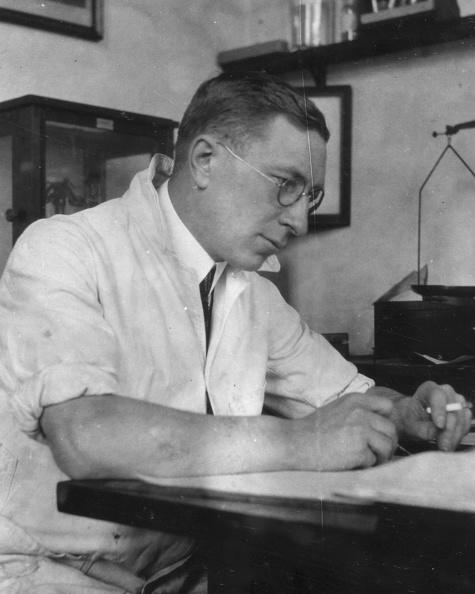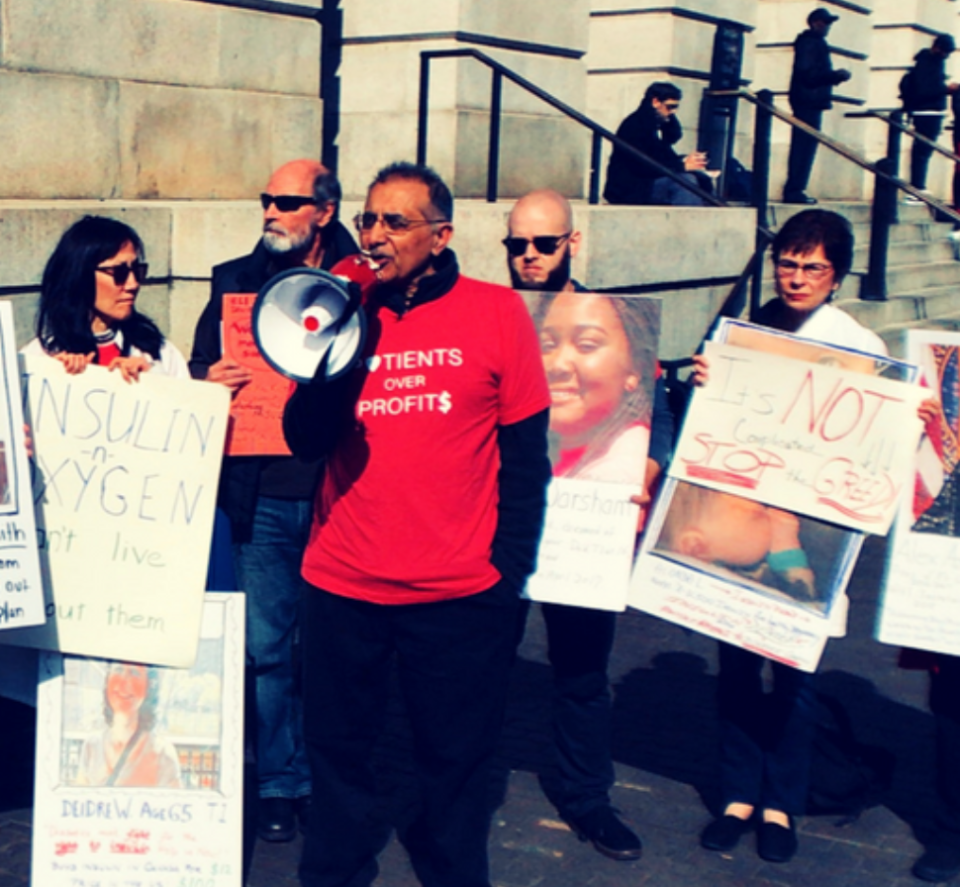Unfiltered: ‘There’s a sort of black market in insulin’
When insulin was first developed as a medical treatment in the early 1900s, it cost the equivalent of about $25 a month.
Now, the life saving vials sell for $250 a pop, totaling anywhere from $500 to several thousand dollars per month. For some of the 7 million diabetic Americans who depend on insulin and can’t afford its hefty price, desperate times have called for desperate measures.
“There’s a sort of black market in insulin: People use expired insulin; people swap insulin … online communities will collect insulin and ship it off to one of their own,” explains Vikas Saini, MD, a cardiologist with more than 35 years of experience in the medical field and president of the Lown Institute. In fact, the insulin crisis is so dire that many have turned to online crowdfunding platforms to help pay for the lifesaving drug. “If you go to GoFundMe and just punch in ‘insulin,’ you’ll get 5,000, 8,000 hits of people trying to raise money for their insulin.
“These are fits of desperation, and in the most powerful, richest country in the world, they’re an embarrassment.”
A naturally produced hormone that processes food into energy, insulin regulates the amount of blood sugar, or glucose, in the body. If there’s too much glucose, blood vessel damage can occur, hindering the flow of blood to vital organs. High blood sugar levels can also trigger diabetic ketoacidosis, a condition that manifests in thirst, frequent urination, nausea and abdominal pain, and it can eventually lead to unconsciousness and death if not treated.
The inability to produce insulin is categorized as type 1 diabetes, whereas a body’s poor response to insulin, or incapacity to produce enough of it, is type 2. The former is usually found in children and adolescents; the latter affects the older population. Today, people with diabetes can regulate their blood sugar through the use of pills, diet, or insulin injections — a far cry from what early-20th-century diabetics had at their disposal.
Before 1922, the only remedy for diabetes was a no-carbohydrate, low-calorie diet, which left many diabetics feeble and bedridden. “If you were diagnosed with diabetes back then, it was a death sentence,” notes Saini. Canadian scientist Frederick Banting, however, set out to change that: With help from his research assistant, Charles Best, he was able to create the lifesaving medicine by purifying animal insulin. The discovery won a Nobel Prize, and they agreed to sell the patent to the University of Toronto for a dollar each in the hopes that the medication would be easily accessible and affordable. In turn, the university gave drug companies the right to produce insulin en masse and to patent any improvements they made. Insulin has been kept under patent ever since, which has resulted in inflated prices. As companies make and patent slight improvements to the medication, they own the rights to that form of insulin for 20 years and, thus, control the cost.

Today the insulin industry is dominated by three pharmaceutical companies: Eli Lilly, Novo Nordisk and Sanofi. “Those three control the vast majority of the market for insulin, somewhere over 90 percent,” says Saini. According to a data analysis conducted by the Washington Post in 2016, Eli Lilly and Novo Nordisk have raised their prices on their human insulin medications 450 percent above inflation over the past two decades. Additionally, when the ethnicities with the highest rates of diabetes also happen to be among the poorest in the nation, the continuous price hikes can mean life or death. “As a doctor, I prescribed insulin,” explains Saini. “I wrote the prescription and gave it to the patient, and, like many doctors, thought that was the end of it. And in many ways, doctors, if they have that view, are really missing a huge part of the reality for their patients: It’s really become harder and harder for people to afford their insulin.”
The high costs have forced some diabetics to ration their insulin supply, a dangerous practice that has resulted in a recent wave of deaths: There was 22-year-old Antavia Lee-Worsham, who struggled to pay for her insulin and was found unconscious by her brother on the kitchen floor. Shane Patrick Boyle, an unemployed young man who was taking care of his ailing mother, had created a GoFundMe page to pay for his own insulin — but died $50 short of hitting the goal. There was also Alec Raeshawn Smith, who at 26 aged out of his family’s insurance; he discovered that the only insurance plan he could afford had a $7,000 deductible, and buying his own insulin at a pharmacy would cost him $1,200 a month out of pocket. That was when he turned to rationing his insulin supply. “His mom didn’t know this. His girlfriend didn’t know this,” says Saini. A few days after having dinner with his girlfriend, he was found dead at home.
“When you have a product that’s priced so high that your customers are dying because they can’t afford it,” says Saini, “that ain’t right.”
Novo Nordisk, Sanofi and Eli Lilly reject suggestions that they have coordinated price increases. Each company’s website explains its understanding of the pricing issue and how it is working on new solutions to solve the problem.
In a statement to Yahoo News, Sanofi said that it is “committed to making our insulins more affordable to all patients” and is continuing to explore solutions such as its Sanofi Patient Connection program and Insulins Valyou Savings Program, which aim to significantly reduce out-of-pocket expenses for low-income, uninsured patients.
In 2017, President Trump condemned the entire drug industry for the high cost of drugs at a rally, saying they were “getting away with murder.” Saini says, “Now that’s something I agreed with Mr. Trump on.”
Months later, Trump announced his pick for secretary of health and human services: Alex Azar, the former CEO of Eli Lilly. The appointment felt like a huge blow to Saini. “The thing about Alex Azar is that, while he could be bringing a lot of insider knowledge, it looks more like the fox is guarding the hen house. There’s an opportunity for Mr. Azar to go down in the history books [to fix the problem], but so far I haven’t seen it.”

In his effort to promote affordable health care, Saini is co-chair of the Right Care Alliance, a grassroots organization of patients, activists and medical professionals who are dedicated to changing the health care system. The alliance has mobilized several protests to bring awareness to the insulin issue, such as gathering 5,000 signatures on Mother’s Day cards and delivering them to pharmaceutical companies as a reminder of the deaths of young diabetics who were not able to afford their insulin. The intention, Saini says, is to raise awareness of the issue and pressure key officials: “Our view is that we need a health care system that really puts people first and puts profit and money-making second,” explains Saini. “We need pressure on the companies, we need pressure on the government, we need pressure on the regulators, and that’s not going to happen by itself. I mean, if it were, it would have.”

